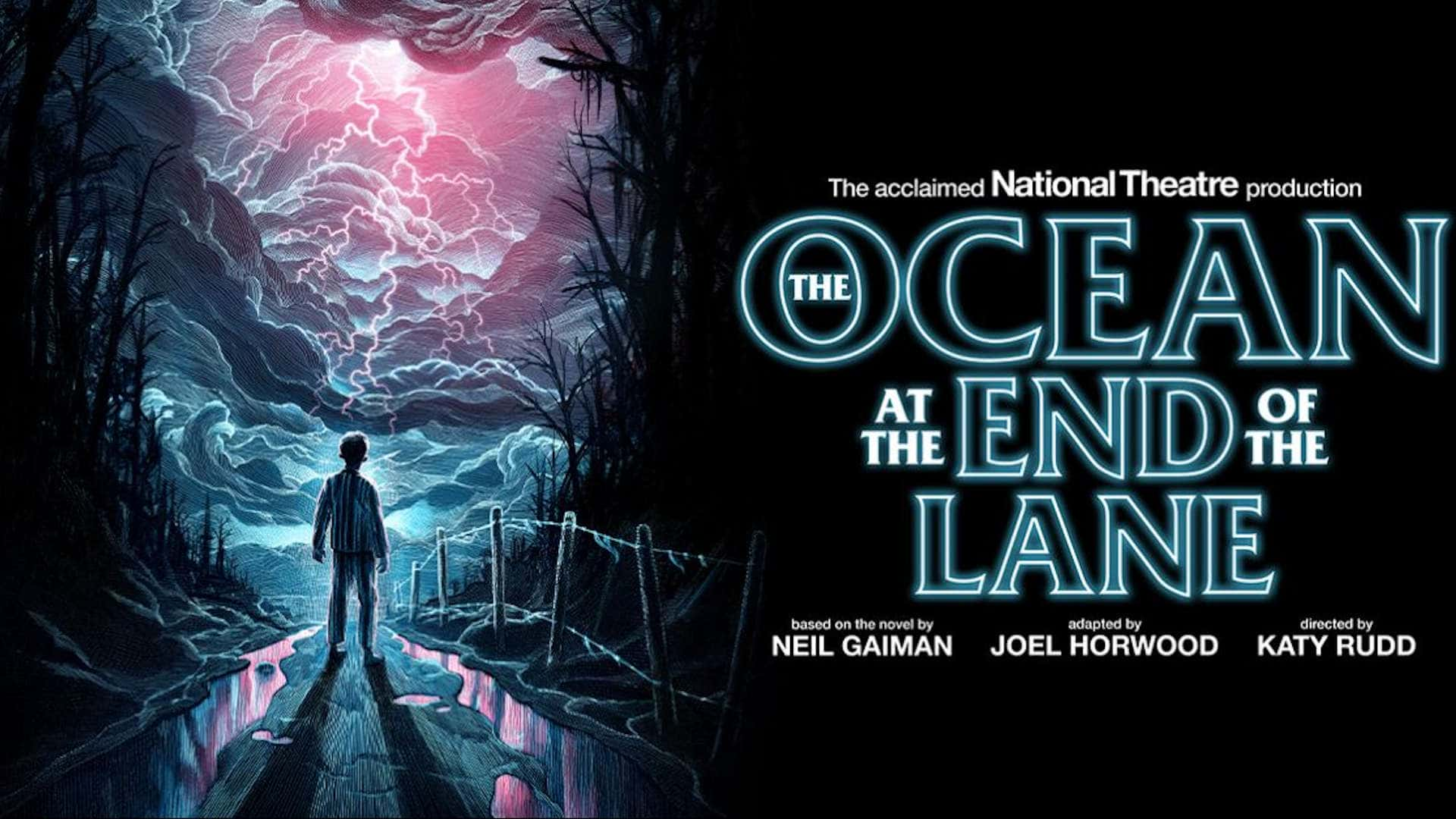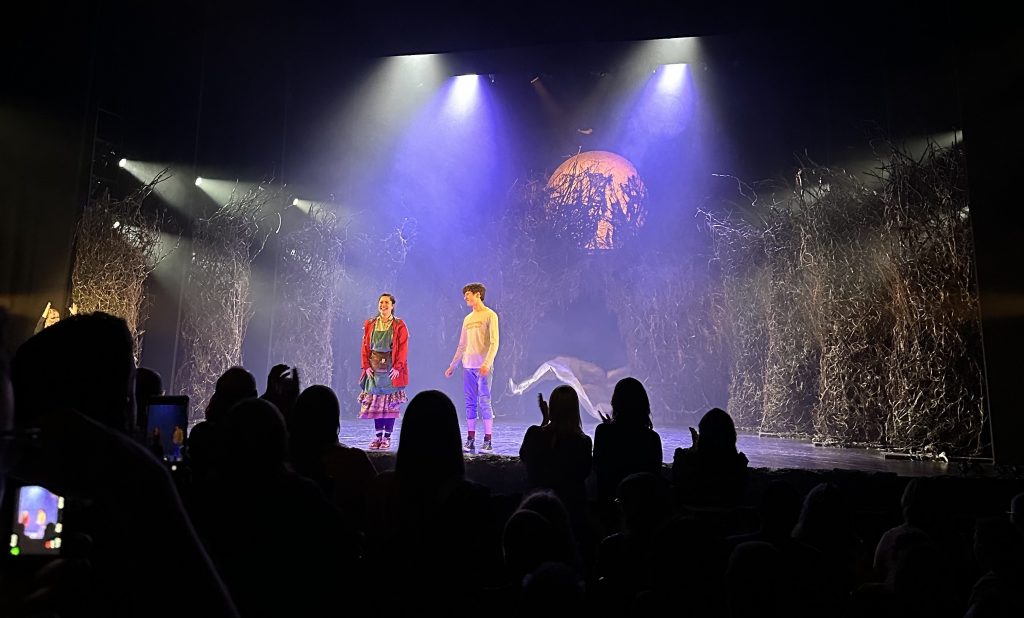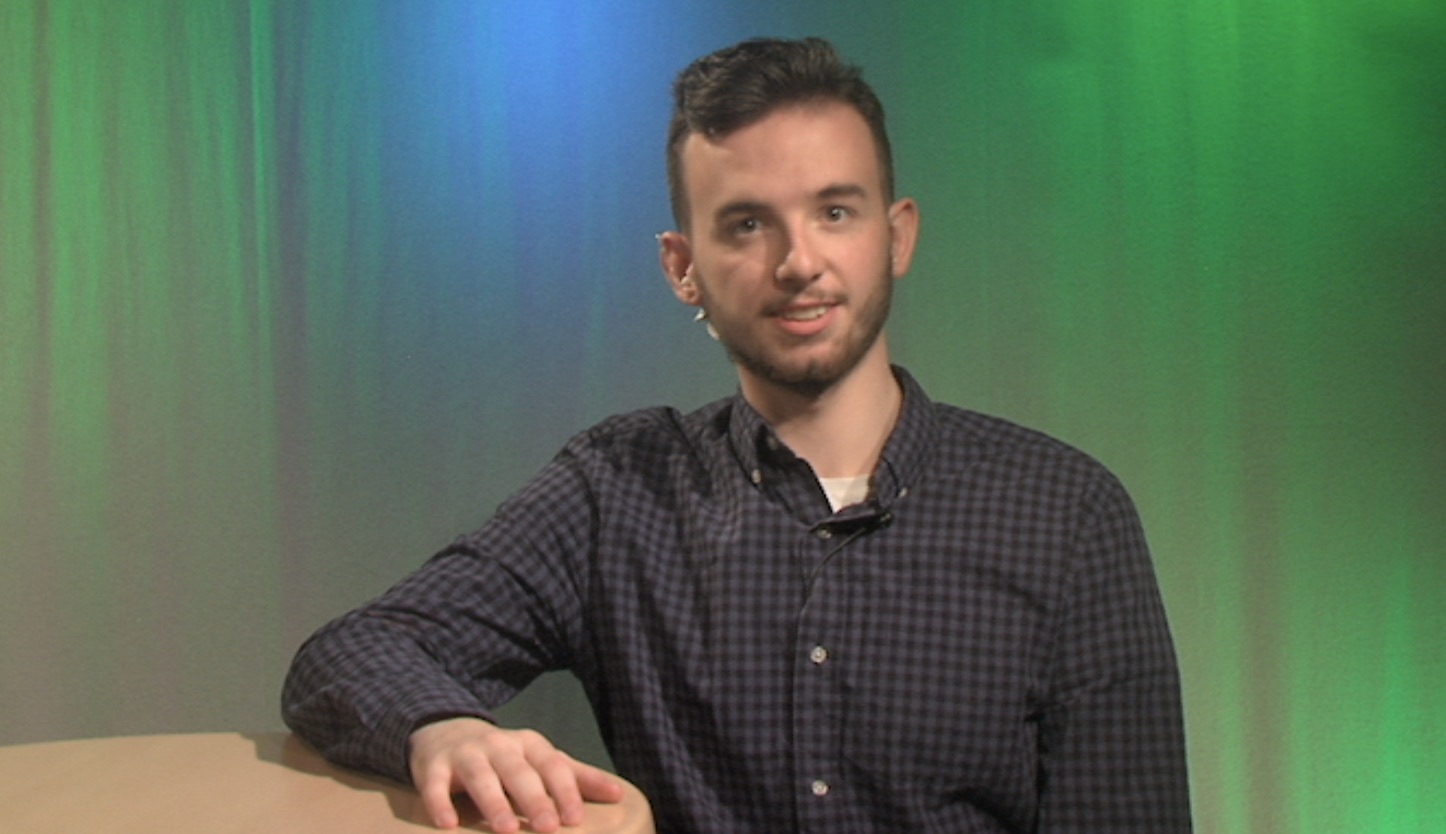Culture
REVIEW: The Ocean At The End Of The Lane at the Mayflower Theatre

The ocean wasn’t only on Southampton’s coastlines tonight, as the Mayflower theatre was flooded with a full house of theatre goers all coming to see ‘The Ocean At The End Of The Lane’. This play adapted from Neil Gaiman’s award winning fantasy novel of the same title may just be one of the best book-to-stage adaptations to date. A bold statement I know. Writers and theatre fanatics both share the same worry about the risk of whether an adaptation will actually work or fall flat on its face; and Neil Gaiman seemed to agree, “I didn’t really know if my story was going to work for the stage”. Well I don’t think it could have worked out much better!
The work between Gaiman, Joel Horwood (the adaptor) and Katy Rudd (the director) must have been like clockwork in the production of this show. Every little meticulous detail really helped bring the magic of this story alive and make us, the audience feel apart of the ‘magical realism’ within Gaiman’s writing. And that’s exactly what theatre is about isn’t it? The play takes us through the story of fantasy, myth and friendship by tapping into a childhood wonder that was once forgotten and all the darkness that was forgotten with it. The play not only shows us the magic of the story and theatre in general but also tackles some hard hitting topics that come with their own emotional trigger warnings as well. The way in which the cast and crew keep the tone of the play from teetering over the edge of ‘too dark’ or ‘too silly’ is incredible but more on that a little bit later. One thing that I found extremely impressive was just the overall movement of the play. Some of the biggest moments or most impactful moments in the play, actually come at times when there is no dialogue but just a combination of perfectly choreographed movement, lighting and sound effects as well as set design that all created well – magic!
You can tell that this show is definitely a big operation with lots of different people having to play their part (excuse the theatre pun). The cast were just fantastic. As I’ve already mentioned, their movement was so powerful alone that I think special recognition needs to be given to Katy Rudd the Director and Steven Hoggett the Movement Director for their attention to detail. To remember dialogue is one job, but to remember THAT amount of movement along with it is hard work. Fantastic job! The standout performances had to be that of Keir Ogilvy who played the role of ‘Boy’ and Millie Hikasa who played the role of ‘Lettie Hempstock’. You forgot from the first five minutes that they were adults acting as 12 year old kids, sharing such a strong friendship character bond on stage which they did so well. The emotions that the pair made you feel (especially Ogilvy) was like being on an emotional rollercoaster. Superb! I think a special shoutout also has to be given to Charlie Brooks (Ursula) and Finty Williams (Old Mrs Hempstock), as despite their characters being polar opposites, both performances brought something different to the overall feel of the play helping balance the darker tones with lighter ones as I previously mentioned. The mixture of horror and laughter was divided perfectly and with the correct timing not to interrupt the flow of the storytelling.
The ensemble who at times acted as stage hands in the vital movement of set were also incredible. They weren’t just coming on mid scene to move set, they became a part of the scene through little expressions or interactions with the cast – a very effective addition that added that extra layer to what is usually an overlooked job.

The set, sound and lighting helped make this show. The bond between the three just elevated the whole play bringing the magic of Gaiman’s mind to life. Magnificent! Fly Davis (set designer) and Paul Dickinson (lighting designer) went above and beyond to create not only the sense of magic but the feel of it too. On the ground level it looks like quite a simple set, but paired with the lighting changes and movement (of both set and lighting) it gives another different dynamic to the story. There is a large use of strobing mixed with a heavy sound score to overload our senses and help make us feel the horror and fantasy of the novel and it is amazing. I sat in my seat with my heart pounding and adrenaline rising all from the combination of lights, sound, and set movement. Jherek Bischoff (composer) and Ian Dickinson (sound designer) have again worked to create a soundtrack that will make you feel the full range of emotions and make you feel like you were part of what is happening. All of this however would not be half as good without the puppetry and real life magic illusions! The puppetry stems from big monsters, to smaller versions of the actors, to sheets of what can only be described as water (if you know you know). Samuel Weir (costume and puppet designer) is who to thank for this, not forgetting the wonderful cast performing to literally bring Gaiman’s words to life, fantastic!
For the magic and illusions I don’t want to give any spoilers away as I, along with the whole of the audience, were just blown away by the amount of real-time illusions being used. I’m sure the audible gasps from the audience was just the reaction Jamie Harrison would have been after (magic and illusions director and designer). From little sleight of hand magic tricks to big visual illusions, at times you will be left scratching your head trying to work out what just happened. The lighting, the sound, the puppetry and illusions all work hand in hand and it is so incredibly impressive and sleek. Usually with book adaptations you could come away feeling slightly lost or struggle to keep up with the story line if you were unaware of the story prior to watching. ‘The Ocean At The End Of The Lane’ however did not leave me confused or with questions left to answer at all. The story was easy to follow and the pace of both act 1 and 2 were upbeat and interesting, making sure we were hooked into the plot from the first five minutes. The play involves different time periods and quick jumps from the past to the future which sometimes can also be misinterpreted, but not this time! Just Brilliant!
Everybody involved in this show is incredible and they all work together fantastically to create something that I believe is a must see play! The show being set in the 80s gives off a sort of ‘Stranger Things’ vibe before stranger things. The play left me leaving the theatre and looking online at where I can get hold of this book and whether there are seats left to go again. ‘The Ocean At The End Of The Lane’ is currently on its UK tour and I would highly recommend this play to anybody interested in theatre. It’s theatre reimagined and I wish everybody involved in this production all the luck and success they deserve.
Culture
Where confidence takes centre stage: How theatre transforms

Performing arts education isn’t just about learning to act, dance, or sing – it’s vital in developing many young people’s confidence and self-expression.
In a digital age where young people are spending more time on their devices than ever before, theatre education provides lifelong skills like communication, resilience and teamwork.
I caught up with some of the students at Artisan Theatre School, a Hampshire based youth theatre club, to see if this rings true.
Ben, 18, said his time at theatre school has “helped develop people skills” and made him “a more confident person”.
He urged other young people to “get involved and enjoy it!”
Daniel, 17, shared a similar sentiment saying his “confidence has grown a lot”.
Theatre education can open a whole world of new opportunities for young people, giving them the space to discover their talents and explore future career paths.
Lucy, 17, has attended Artisan Theatre School for nine years and said: “I want to be a performer in some capacity.”
She added: “That’s my dream because of Artisan.”
Emma, a singing teacher at the school, said performing arts education is “beneficial to anyone,” not just those pursuing it professionally.
She added it can be especially valuable for children with SEN, helping them build confidence, improve communication, and “come out of their shell” in a supportive environment.
Unfortunately, despite its benefits, arts education is not guaranteed for every young person.
Cuts to funding over the last decade has had a significant impact, limiting access to creative learning opportunities.
The Cultural Learning Alliance’s 2025 report reveals a 42% decrease in Creative Arts based GCSE entries since 2010, and a 27% decline in the number of Arts teachers.
Sam Blackwell, principal and founder of Artisan Theatre School, said arts education is “really important” and that “they don’t do enough of it in schools”.
She explained that her vision in creating the school was to “give back more to kids and get them being confident”.
To help fill the gaps left by reduced arts provision in schools, Sam plans to introduce additional classes and offer increased opportunities for her students to learn from industry professionals.
Culture
And we all keep dancing for it can’t get any worse (90s/00s)

The Shakespearean nature of Tony Blair’s time as Prime Minister is something that had never been seen and his obsession with “the spin” that had won him the 1997 election and made him one of the most popular prime ministers when entering office.
With large proportions of the public optimistic for his premiership incoming.
A fall from grace would ensue much like Macbeth.
It would be cruel and untrue to reflect on Tony Blair’s premiership to say that it was a complete failure, especially as many still see him as one of the best PMs the UK has ever had.
Since one of the biggest landslides in UK election history in 1997, he was able to push through many socialist policies without much of a hassle: inflation was low, crime was down by a third, children were achieving some of their highest results ever in school, thousands more students were going to university, a million pensioners and three million children had been taken out of poverty, the quality of the air, beaches, and drinking water was as clean as before the industrial revolution.
However 9/11 changed everything. The era of youthful optimism and rebellion has been replaced by what a lot of thinkers call post-post modernism.
At site Zero, George Bush claimed that “those who are responsible must be brought to justice.”
He outlined Cuba, Iran, Libya, Syria, North Korea and most importantly Iraq.
Once the troops stepped into Iraq, it was the start of a domino effect that quickly decimated Blair’s time as PM.
Unlike Kosovo and Sierra Leone, Britain’s involvement in Iraq did not have the public’s support.
In his book The Prime Ministers, Steve Richards remarks that Tony Blair had not assumed any cabinet position in the lead up to his premiership and asks:”What if Blair had been foreign secretary? at least he would’ve seen, and interpreted intelligence – an explosively contentious issue in the run-up to the Iraq War.”
And then, the day after London had been announced as the host of the 2012 Olympics, on the 6th of July 2005, 7/7 happened.
Four terrorists detonated bombs on public transport – 52 killed and 784 were injured.
When times get tougher and life gets sadder, what do people do? Dance to forget
Prince William and Kate were leaving a Chelsea nightclub at 3am, Prince Harry was partying with Kanye West and getting into a scuffle with photographers at 4am.
The 2000s club scene was here and everyone was taking part; it was loud, it was abrasive, and it was here to stay.
Since the introduction of the stifling 1994 Criminal Justice Act, which is considered to have brought the illegal rave era largely to a close, “free parties” were the new get-around of the law: Student clubs offering “buy one, get three free” on alcopops and 50p doubles for an hour.
Halls bars were £1.20 a pint. Artists like LCD Soundsystem, Missy Elliot and Rihanna began their rise to fame with dirty, booming soundscapes that captured the drug-fuelled atmosphere of clubs as everyone dances to a beat that never seems to end, drenched in sweat.
Films like Trainspotting capture the allure of 2000s clubbing but the grim reality, drugs have found their way into the club scene.
Much like the Oasis album Standing on the Shoulder of Giants is described as Oasis’ “come down album”, the 2000s was a comedown era of clubbing.
The times were sad, but the music got louder?
As David Cameron’s government entered Number 10 Downing Street in 2010 and ushered in 14 years of austerity, where exactly would clubbing culture go with almost all clubs closing….
Culture
REVIEW: Sigrid – There’s Always More That I Could Say

2 out of 5 stars
A disappointing third album filled with negativity
In all honesty, I was late to Sigrid’s party.
I started following the Norwegian pop star in 2023 when she had already released two albums and completed a slew of EPs and international tours.
In no time at all, I was captivated by her rasping tones, funky rhythms, and cool electronic synths.
When news broke that her third album would be releasing on 24 October, it was no surprise to find myself listening and assessing it…
Jellyfish is the first single and the most lighthearted. I like it.
It’s a nice story about two people meeting at a dance and kindling a relationship.
Sigrid sings in a syncopated rhythm, giving a jazzy tone to the tune.
For the first time in her career, she includes a flute.
Cold, gritty, grim
It plays a flourish at the beginning but I can’t hear it throughout the rest of the track. It would be good to hear more of the flute in future.
Fort Knox is single number two. As the name suggests, this is a cold, gritty, grim song about a woman betrayed by her man.
This betrayal cuts so deep that she has retreated into her shell to “lock my love up in… Fort Knox”.
I enjoyed the dramatic, dark nature here, especially the war cry chorus throughout the song.
Towards the end, you would think the song has finished before it plays one more crescendo of strings to cap things off. I thought that was unnecessary.
The third single, Two Years, is written from the perspective of the woman’s boyfriend, another new departure for Sigrid.
He has been chasing for that exact period of time. It’s a cheery song with a strong beat, despite the desperate lyrics like: “What are you running from? / Why did you let me go?”
I’ll Always Be Your Girl is another sad song of frustration and heartache caused by a rowdy, hot-headed partner.
It is sung very well, especially the pleading chorus line, and the drum-guitar combination gives me something to nod along to.
Unconventional energy
Do It Again is the most unremarkable song on the album.
There is a good guitar and drum track, however the story again is quite predictable for Sigrid (being tempted to rekindle on old flame relationship).
Kiss The Sky returns to more unconventional energy which is great.
A lovely fade into the track leads into the main verses.
This time, Sigrid is speaking her verses with a distorted effect rather than singing them. It sounds good and complements her natural raspiness.
A strong guitar riff carries us through the bridge. The electronic synths make this seem like a 1980s dance track.
It’s only the lyrics that make this song a story of disappointment between lovers.
There is sexual innuendo in Hush, Baby, Hurry Slowly.
You could interpret it as a man and woman deciding whether to move forward with their relationship.
You could see it as partners deciding whether to have sex or not.
As a result, it’s an interesting song and makes you listen to try and work it out.
The structure shakes things up by starting with the chorus fading in.
The song ends with the melody slowing down and lowering in pitch, reflecting the title in musical terms.
The title track is the obligatory solo piano song.
Sigrid has had at least one piano focused song in all albums.
This is the most beautiful song in the album, featuring solo piano and a nice resonance on the voice.
The lyrics still contain tensions between people, like “giving…my worst” as a girlfriend.
Nevertheless, this is my favourite song from this year’s collection.
The penultimate track is also the longest in the album.
Have You Heard This Song Before picks up the energy from the previous song with a predictable but welcome mix of drums and synths.
The lyrics are pretty hopeful in tone about wanting to spend time with your partner. This is the most positive track on the album.
The last song, Eternal Sunshine, is a conventional finale song.
It has a regular beat and instrumentation.
It is another song built out of frustration with a partner – she wants to “drink” him out of her mind.
It would have been nice to have something different to end on – maybe a different topic.
This is the shortest album Sigrid has released. That is disappointing.
There are 10 songs in only 31 minutes.
I would have expected the usual 12 tracks or more.
The previous albums managed it fine.
Sucker Punch (2019) and How To Let Go (2022) contained 12 songs. The Special Edition of How To Let Go added 15 songs on top of the originals.
This album differs from the last two in that every song but one is constantly loud, energetic, and pumping.
I would have preferred more balance between softer and pounding songs.
How To Let Go had more positivity in it, such as singing in a taxi, body-confidence in the mirror and making the most of life.
This album has replaced that with disappointment and frustration.
It is the album with the most “explicit” songs – never before have we had an album with so much swearing.
I hope that is toned down in future.
Here’s hoping that the next album is more positive, unconventional and creative.
Perhaps that will come out in three years, like the others.
There’s always more that Sigrid could say (sorry, that was a terrible joke).
-

 Football9 years ago
Football9 years agoFootball – Winchester City vs Didcot Town
-

 Community9 years ago
Community9 years agoWinnall community association renovated
-
Community8 years ago
Hampshire’s frontline services at risk
-

 Hampshire8 years ago
Hampshire8 years agoUniversity of Winchester Parking Trouble
-
Community8 years ago
Knight Bus unveiled at school
-

 Community8 years ago
Community8 years ago‘Controversial’ new plans take shape in Eastleigh
-

 Winchester News Online8 years ago
Winchester News Online8 years ago#MiracleMissy Update
-

 Bulletins7 years ago
Bulletins7 years agoWINOL 20 November 2018
